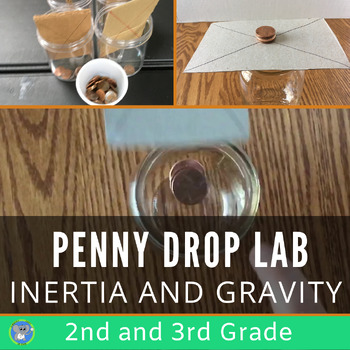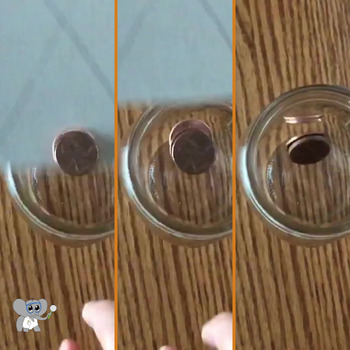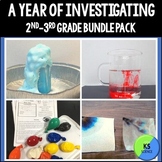Inertia And Gravity Experiment | The Laws Of Motion Grade 2 3 | Print or Digital
- PDF
- Easel Activity
Also included in
- Bundle, Save and Meet the Standards. Discover 8 investigation units plus over 30 demonstrations. These lab activities guide students to discovery. Save yourself time searching for hands-on activities. Explore weather, chemistry, plants, health, the properties of matter, and more. Memorable labsPrice $37.80Original Price $47.25Save $9.45
- Explore forces and motion in this hands-on experiment bundle. Three-grade level versions with 20% savings. Teachers will love its' ease of use, simple materials, and meeting the science and engineering practices. Students will love uncovering the science of inertia, gravity, and The Laws of Motion.Price $8.56Original Price $10.70Save $2.14
Description
Investigate inertia and gravity in this hands-on experiment for 2nd and 3rd graders. Aligned with NGSS. Teachers will love its' ease of use, simple materials, and watching students get excited about science. Students will love uncovering the magic of the laws of motion. This investigation has it all to meet the standards.
Digital and Distance Learning Approved. This is a great way to get students to use the scientific method at home. The only supplies needed are a container, cardboard, and pennies. The supplies can easily be modified. The file is a PDF, but comes with a pre-created Easel by TpT overlay. We added text boxes and tips for completing it online. Click "Open in Easel" on the product page to get started. They can be added to your Google Classroom as an assignment. Students can also print and complete. A science lab teacher can also assign all the grade levels which allows families to conduct the experiment together.(See the Bundle.) If you don't have Google Classroom you can send the overlay as a link to Google accounts. If that is not possible use the PDF in a program like Kami extension to create an online version with text boxes. We already did it for you in Easel. You could conduct the experiment as a demo for the students and then they try it. Get creative!
A science lab teacher can also assign all the grade levels which allows families to conduct the experiment together. See the bundle for all three versions.
Students will:
- Brainstorm what they know about the topic.
- Write a hypothesis.
- Record detailed observations.
- Create a bar graph.
- Summarize their data and make a conclusion using their evidence.
- Explain Inertia and gravity.
- Create their own demonstration of inertia.
What is included in the Hands-On Exploration:
- Correlation to the 3rd Grade *NGSS Forces and Interactions
- Correlation to K-2nd *NGSS Science and Engineering Practices
- Correlation to 3rd-5th *NGSS Science and Engineering Practices
- Background information for the teacher with tips.
- Tested procedures
- 7 Page investigation journal following the scientific method
- Two data pages to choose from. (1 trial or 3 trials) Differentiated for your needs.
- Multiple choice and short answer assessment
- Create your own Demonstration worksheet
- Answer Key
- Scoring Rubric
Supplies for Investigation
Different sized containers, pennies, scissors, cardboard, ruler
Are you looking for this same topic in another grade level? We have you covered. This investigation journal is available for K-1st and 4th-5th grade too. Each version is differentiated for abilities and the Next Generation Science Standards. The K/1st grade version tests the difference between a push and a pull. It contains checkboxes and coloring. The 2nd/3rd grade journal also investigates if the size of the container affects the number of pennies that fall, but uses fewer pennies and trials. The 4th/5th grade journal expands the number of trials and uses more pennies.
Click the link to check them out. Also available in a bundle. Buy all three versions and save.
Push and Pull Experiment: Inertia and Gravity with Kindergarten and First Grade
Inertia and Gravity Lab: Investigate the Laws of Motion with 4th and 5th Grade
Inertia and Gravity K-5 Bundle
Also corresponds with
Inertia Exploration Task Cards: Discover the 1st Law of Motion
Great for homeschool, classrooms, scouts, end of year activities, science fairs and more.
Yours in Science,
Kimberly Scott Science
Inspiring Lifelong Learners through a Memorable Scientific Experience.
All parts are copyrighted. Please see theterms of use in the download.








